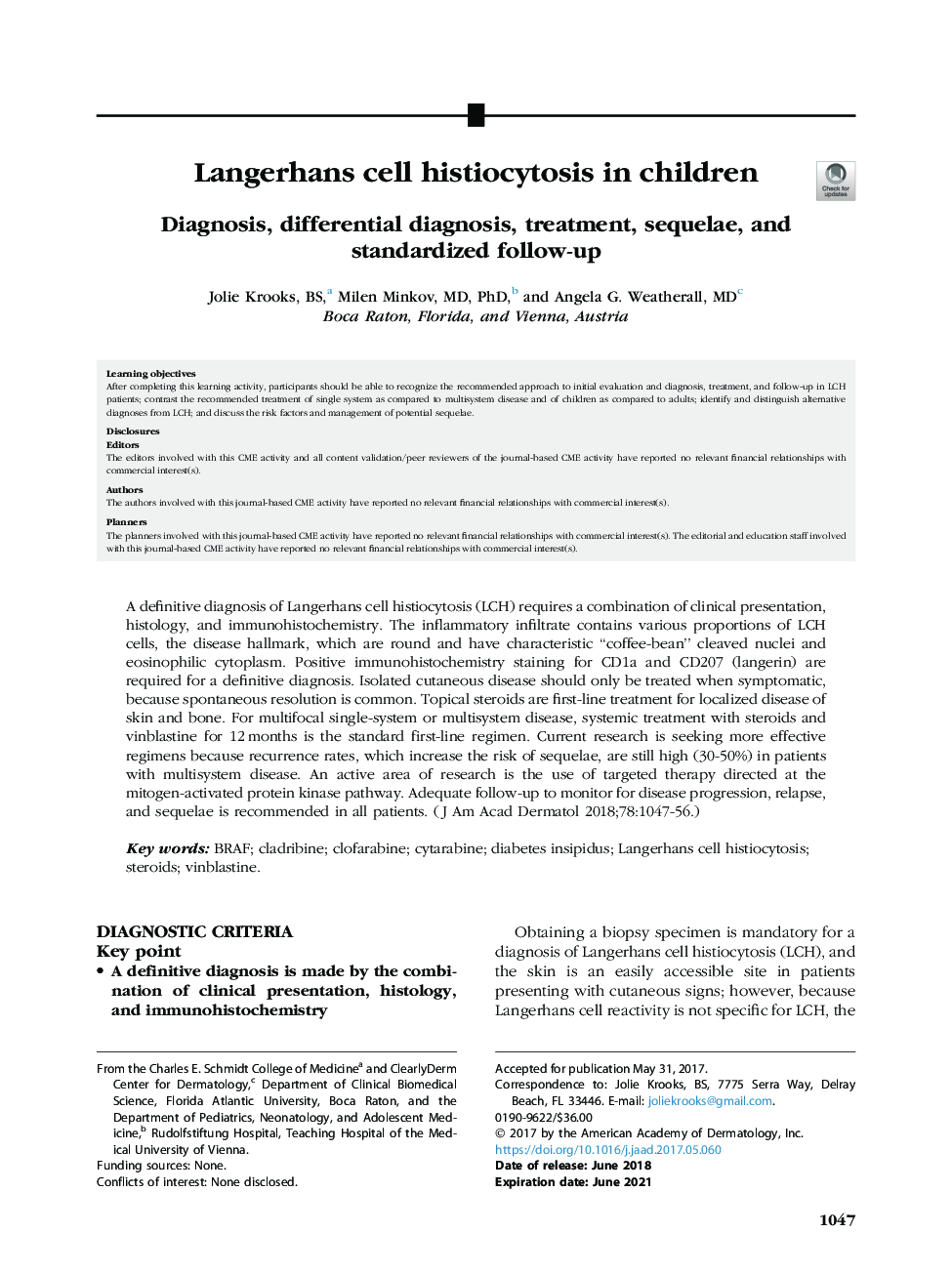| Article ID | Journal | Published Year | Pages | File Type |
|---|---|---|---|---|
| 8715003 | Journal of the American Academy of Dermatology | 2018 | 10 Pages |
Abstract
A definitive diagnosis of Langerhans cell histiocytosis (LCH) requires a combination of clinical presentation, histology, and immunohistochemistry. The inflammatory infiltrate contains various proportions of LCH cells, the disease hallmark, which are round and have characteristic “coffee-bean” cleaved nuclei and eosinophilic cytoplasm. Positive immunohistochemistry staining for CD1a and CD207 (langerin) are required for a definitive diagnosis. Isolated cutaneous disease should only be treated when symptomatic, because spontaneous resolution is common. Topical steroids are first-line treatment for localized disease of skin and bone. For multifocal single-system or multisystem disease, systemic treatment with steroids and vinblastine for 12â¯months is the standard first-line regimen. Current research is seeking more effective regimens because recurrence rates, which increase the risk of sequelae, are still high (30-50%) in patients with multisystem disease. An active area of research is the use of targeted therapy directed at the mitogen-activated protein kinase pathway. Adequate follow-up to monitor for disease progression, relapse, and sequelae is recommended in all patients.
Keywords
Related Topics
Health Sciences
Medicine and Dentistry
Dermatology
Authors
Jolie BS, Milen MD, PhD, Angela G. MD,
